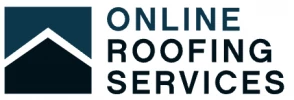Late updated: 20 Jun 2024 13:06
Written by: Oliver Bennett
The Future of Green Roofing in the UK: Innovations and Trends
The future of green roofing in the UK shines brighter with each passing year. As urban spaces grow and climate change intensifies, the need for sustainable solutions becomes ever more critical. Incorporating green roofs into our urban fabric offers numerous benefits, from mitigating climate change to improving urban greening and sustainability.
We see the trend towards green roofs accelerating, fuelled in part by innovative policies and forward-thinking designs. London, thanks to initiatives like the 2008 London Plan, has more than doubled the area covered by green roofs. This transformation is not limited to the capital; cities across the UK are beginning to embrace this vital green space technology, enhancing biodiversity and reducing pollution.
Embracing green roofing can revolutionise our approach to urban living. The UK is awakening to the immense potential of these living roofs, as seen in global examples from rooftop gardens in Japan to the massive living roof of the Vancouver Convention Centre. By expanding green spaces atop our buildings, we pave the way for a sustainable and healthier future.
The State of Green Roofing in the UK
Green roofing is becoming increasingly significant in the UK, driven by government policies, market trends, and innovative developments in urban planning and design. London's extensive adoption serves as a model, demonstrating the potential benefits and challenges.
Legislation and Planning Policies
The UK government has implemented several regulations and planning policies to promote green roofing. The London Plan mandates sustainable urban drainage systems, which include green roofs, to combat the urban heat island effect.
Various London Boroughs are incentivising developers through financial incentives. The Living Roofs and Walls Policy encourages property owners to install green roofs to enhance biodiversity in urban areas. Central to these policies is the goal of creating more sustainable, livable cities.
Current Trends and Developments
Developers are increasingly integrating green roofs in new constructions. Salford is seeing a rise in these eco-friendly structures. The trend includes vegetation that supports urban wildlife, mitigating climate change impacts, and improving air quality.
There is a growing interest in combining green roofs with green walls. Builders and property owners are leveraging these developments to increase building value and appeal to eco-conscious tenants. Financial incentives, in the form of tax breaks, are encouraging this sustainable trend.
Case Studies: London and Other UK Cities
In London, the Mayor's ambition to make the city 50 per cent green is evident in the Central Activity Zone. The area has seen substantial adoption of green roofs, driven by regulations and financial incentives.
Salford is another example where green roofs are being successfully implemented. Projects like the Vancouver Convention Centre and 10,000m² living roof in California offer inspiration, but the focus remains on adapting these models to UK-specific needs and climates.
By adopting these innovative solutions, we are witnessing a transformative impact on urban environments, making cities more resilient and sustainable.
Design, Implementation, and Management
We must adopt advanced techniques and meticulous planning to realise the potential of green roofing in the UK. By focusing on innovative green roof technologies, we can address key challenges such as urban heat islands, water management, and energy efficiency.
Innovative Green Roof Technologies
Green roofs harness advanced technologies to improve energy efficiency and mitigate flooding. One notable example is the integration of solar PV panels with green roofing, enhancing renewable energy production and providing additional insulation.
In Germany, cities like Stuttgart have pioneered these innovations, demonstrating the synergy between green roofs and water management systems, reducing rainwater runoff, and heatwaves' impact.
Blue roofs, designed primarily for rainwater management, further complement green roofs, preventing flooding and enhancing public health by cooling urban areas.
Our approach integrates landscape design, ensuring rooftop gardens blend seamlessly with the urban environment while maximising benefits. Retrofits through schemes like the Green Homes Grant make these technologies accessible for older buildings, promoting widespread adoption.
